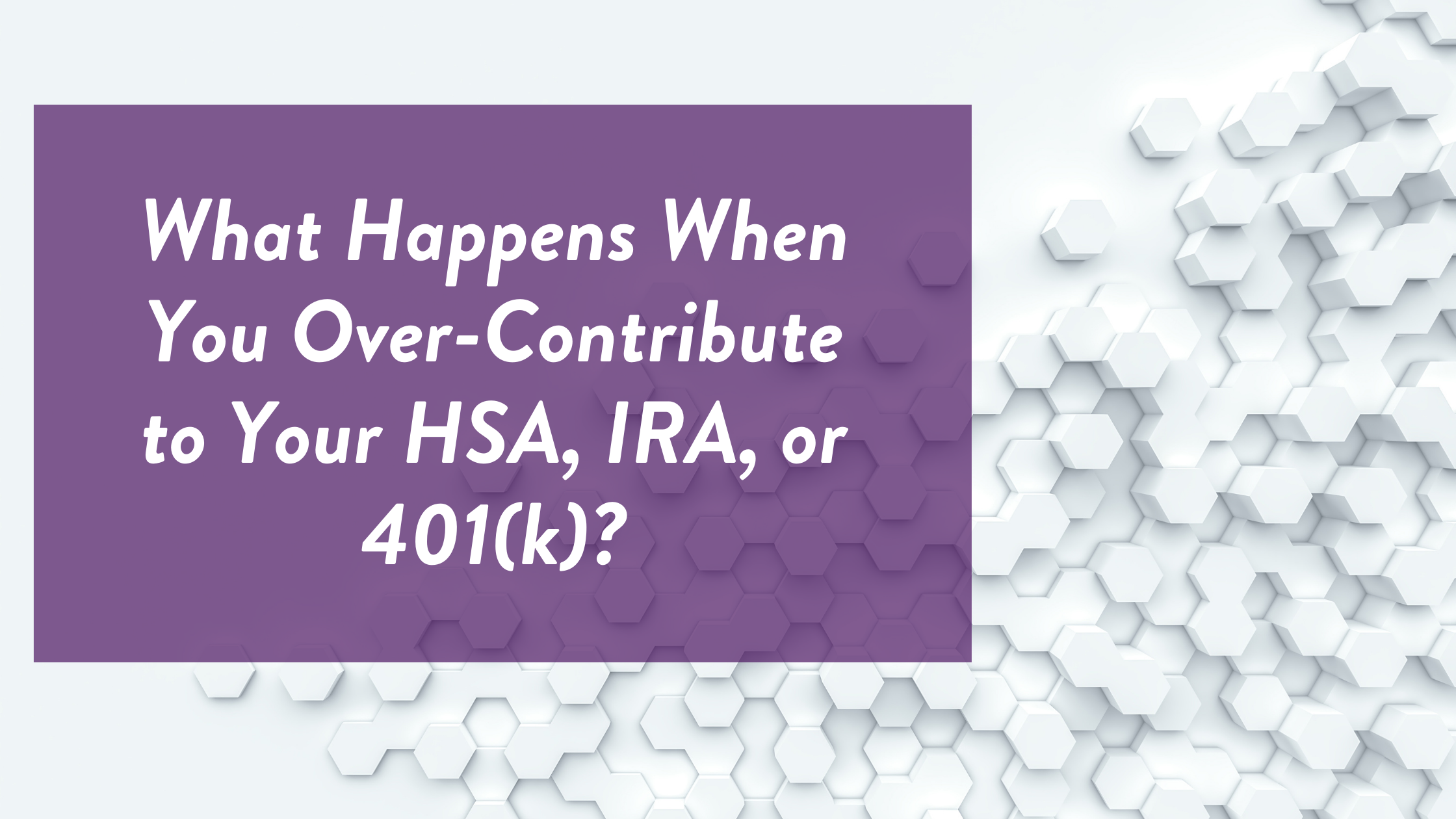
What Is a 529 Plan, and What Are the Benefits of Investing In One?
The thought of saving for your child’s college education can be daunting. Higher education costs seem to rise more and more each year, and saving enough to send your child to college can feel like a steep mountain to climb. It can be difficult to know the best way to save or where to even begin. If you’re feeling this way, a 529 plan could help. And if you’re wondering, “What is a 529 plan?”, you’re in the right place. Read on to learn more.
What Is a 529 Plan?
529 plans are investment plans that were created specifically to help parents save for their children’s higher education expenses. They were added to the IRS code in 1996, and offer federal and state tax advantages. We’ll go into greater detail about those advantages later in this post, but in general, these accounts allow for tax-deferred investment growth and tax-free distributions for qualified education expenses.
In addition, in 2017 the IRS added K-12 tuition to the list of qualified educational expenses, and in 2019 federal and private student loan payments were included as well, further expanding the usefulness of this kind of savings plan.
There are two types of 529 plans:
- College savings plans. These plans work much like a Roth IRA or Roth 401(k), in that your after-tax contributions are invested in mutual funds or similar investments.
- Prepaid tuition plans. These plans allow you to pre-pay all or part of the costs of an in-state public college education. They may also be converted for use at private and out-of-state colleges. Unlike the college savings plans, prepaid tuition plans can be offered by educational institutions directly.
How Do 529 Plans Work?
These plans are managed at the state level, and nearly every state offers at least one 529 plan. Each state determines how their 529 plans will work, so plan details and state tax advantages can vary widely.
You can invest in almost any state’s 529 plan, not just your own. The funds can be used to pay for college costs at any qualified college nationwide—more than 6,000 U.S. colleges and universities—as well as at more than 400 foreign colleges and universities. Check here to see if your college is eligible. In most cases, the state that sponsored your savings plan does not affect your choice of college: You can invest in one state’s plan, and use those funds at a qualified college in another state.
What Expenses Can I Pay With 529 Plan Funds?
529 plans allow for tax-free earnings growth and tax-free withdrawals, as long as the funds are used to pay qualified education expenses. These include:
College, university, and other eligible post-secondary school tuition, fees, books and supplies, computers and related equipment, internet access, special needs equipment, and, in some cases, room and board (including off-campus rent). The general rule of thumb for college expenses is that the expense qualifies if it is required for enrollment in an eligible institution. However, some costs like student health insurance or transportation costs do not qualify, unless they are billed by the college as part of their comprehensive tuition fees or are identified by the school as a requirement for enrollment or attendance.
K-12 school tuition expenses at private, public, and religious schools. Tax-free distributions of up to $10,000 per year, per beneficiary are allowed. However, while these expenses are considered qualified educational expenses at the federal level, not all states recognize them as such. You’ll want to double check your state’s requirements before using a 529 plan for K-12 expenses.
Student loan payments for loans offered by the federal government or private lenders. This newer provision, added in 2019, allows tax-free distributions of up to $10,000 per borrower for the beneficiary and the beneficiary’s siblings (this is a lifetime limit).
Please note that for tuition expenses that were paid with 529 plan funds, you cannot also take a tuition credit on those funds—no double-dipping!
Are There Penalties or Fees Non-Qualified Expenses?
Non-qualified plan distributions are subject to income tax, as well as a 10% penalty on the earnings portion of the withdrawal (each distribution contains a prorated portion of earnings and principal). However, there are a few exceptions to the penalty. It is waived if:
- The beneficiary receives a scholarship that is tax-free
- The beneficiary attends a U.S. Military Academy, or
- The beneficiary becomes disabled or dies
In these cases, the earnings portion of a non-qualified withdrawal would still be subject to federal (and possibly state) income tax, but the 10% penalty would be waived.
In addition, earlier we mentioned that 529 plan funds can be used for K-12 school tuition expenses, with federally tax-free distributions. However, in Minnesota, K-12 tuition is not considered a qualified expense for 529 plan distributions. So while you could use your 529 plan for these expenses and not see any federal penalty, those funds would be subject to Minnesota state taxes. In fact, if you received deductions or credits for 529 plan contributions in the past, you could end up having to pay them back if your 529 plan funds were used for K-12 expenses. So Minnesota residents should keep this in mind when deciding whether to use 529 plan funds for K-12 school tuition. As a Minnesota CPA, I am well-versed in both federal and state tax law, and can help you navigate this important decision.
What Are the Tax Advantages of 529 Plans?
While contributions to 529 plans are not tax-deductible at either the state or federal level, federal tax law does provide significant benefits for these plans, such as tax-free qualified distributions and 5-year gift tax averaging. Earnings accumulate on a federally tax-deferred basis, and distributions are not taxed federally when used for qualified educational expenses.
State tax benefits for 529 plans vary. Some offer incentives, such as state tax deductions and credits. In Minnesota, taxpayers can claim either a subtraction or a tax credit—depending on their income—for contributions to ANY state’s 529 plan:
- A $1,500 subtraction ($3,000 if married filing jointly) against Minnesota income tax, or
- A tax credit equal to 50% of the taxpayer’s contributions, reduced by any withdrawals, with a maximum credit amount of up to $500 depending on the taxpayer’s federal adjusted gross income. The income thresholds used to determine the maximum credit amount are adjusted annually.
What Happens If I Don’t Use All of the Money in My 529 Plan?
If for any reason you end up having more funds in your 529 plan than you need, you have options, including:
- Changing the beneficiary to another qualifying family member (including yourself—use it to further your own education!)
- Holding the funds in the account in case your child wants to attend grad school later on.
- Rolling over the funds to a 529 ABLE account—an account similar to a 529 plan, but created specifically for people living with disabilities.
And, of course, you can also use the funds to pay off student loans (up to $10,000 per borrower) for both the named beneficiary and their siblings. In addition, you can withdraw leftover money for any other reason—but you’ll have to pay the required taxes and penalty for a non-qualified distribution.
Top 5 Benefits of 529 Plans
529 plans help you save for your child’s education while offering numerous benefits, such as:
- Income Tax Breaks. As mentioned above, 529 plans offer significant tax breaks at both the federal and state levels.
- Low Maintenance. Most 529 plans allow automatic deposits from your bank account or payroll deduction plans.
- Simple Tax Reporting. Contributions to your 529 plan do not have to be reported on your federal tax return. When you make withdrawals, you will receive a Form 1099 to report any taxable earnings.
- Flexibility. You can make updates to your 529 plan investment options twice per calendar year. You can also roll over your funds into a different 529 plan once per 12-month period. In addition, there is no federal limit on the frequency of these changes if you also change the beneficiary to another qualifying family member at the same time.
- Anyone is Eligible. 529 plans have no income, age, or annual contribution limits (though there are lifetime contribution limits, which vary by plan).
If you haven’t started saving for your child’s education yet, it’s not too late, and a 529 plan could be just what you need. Contact Wood CPA at 952-356-1110 with any questions you have or for help selecting the right 529 plan for you.








